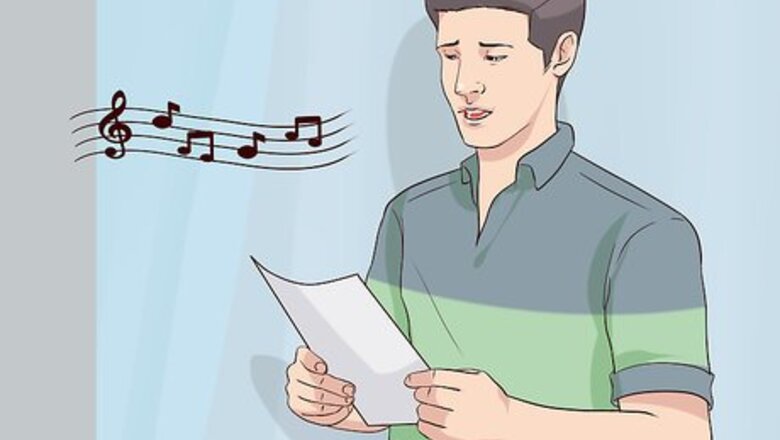
views
Preparing Beforehand

Practice your craft. Whatever you’re on stage performing, you should know it well. If you’re an actor, practice acting. If you’re a musician, practice your music. You may be naturally talented, but if you put in hard work, it will show! Know the words to any lines you’ll be speaking. Memorize the lyrics to any songs you’ll be singing. If you play an instrument, make sure you have the music memorized.

Find inspiration from great performers. Watch performance videos of artists you admire. Observe their mannerisms. When they do something that is impressive or triggers positive emotions, try to figure out what about their presence is effective in those moments. For example, does the artist come across as natural and believable? If so, why? What does the performer do that shows emotional attachment to the lyrics, music or dialogue?
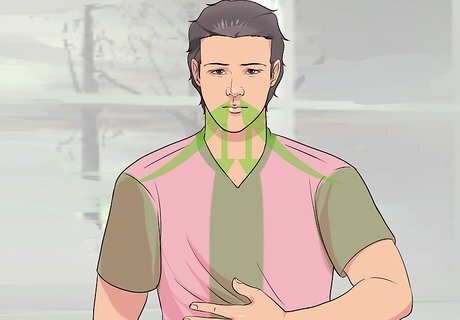
Focus on your breathing before going on stage. This is a way to calm your nerves. Take deep breaths in and out. Don’t think about any stress or distractions - think about your breathing and calming your body down one part at a time as you inhale and exhale.

Think positively. It’s important for your self confidence that you don’t allow negative thinking to take hold. Know that if you do make a mistake, you can bounce back without letting it affect your positive outlook. Be secure and happy with who you are. You’re going on stage, so you clearly have talent! For example, if a negative thought arises, counter it with a positive affirmation like “I will be successful.”
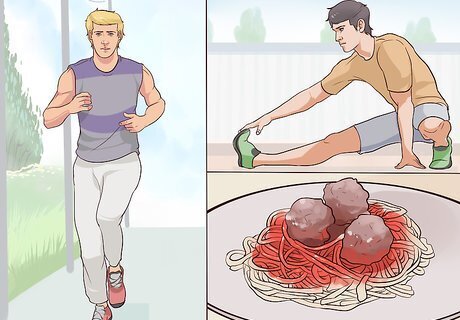
Eat and exercise. Make sure that you eat before your performance to power you through it. Have carbohydrates like pasta or rice that are complex but still easily digestible. Physical exercise relieves stress, so try stretching or running in place before you perform.
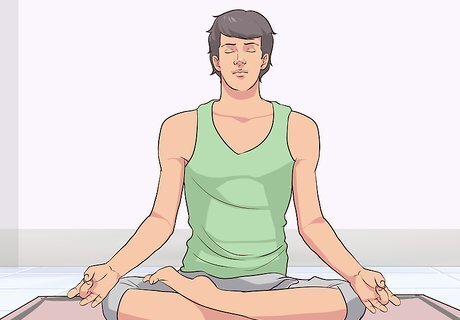
Meditate the day of your performance. This is a great way to relieve stress. Find a quiet place. Sit in a comfortable position and imagine that you’re in a pleasant place. Clear your mind of any distractions and focus on your inner calm. Meditating before a performance can help ease your anxiety and improve your focus. Try gentle humming and playing relaxing music.
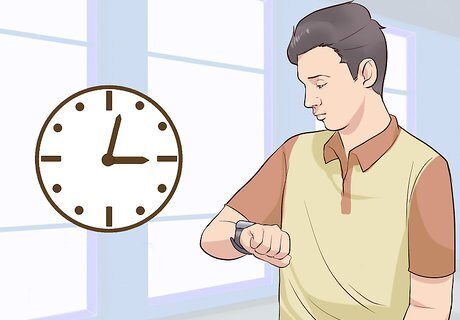
Show up early. This strategy can help you ward off stage fright. It’s better to be prepared than to feel rushed. Also it’s easier to feel in control if you are there when the audience is slowly filling up, rather than arriving to an already-seated crowd. Know your place on the stage so that you won’t appear unsure when you make your entrance.
Wearing the Right Outfit

Choose colors that contrast the stage backdrop. You don’t want to blend into the backdrop. Try to find out what color it will be so that you can wear an opposite shade. If you can’t find out the backdrop color beforehand, bring multiple outfit choices. Avoid wearing black unless you’re certain that the backdrop will be very light.
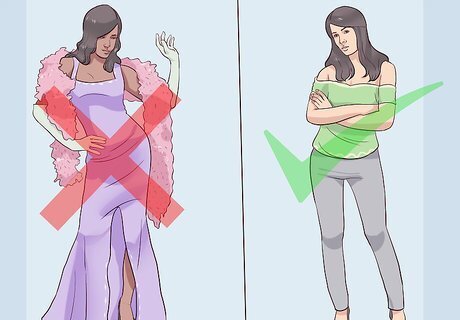
Select flattering clothing. You want to wear something with visual interest, but not so much that it detracts from your performance. For example, If you want to wear something sparkly, stick to just one piece of clothing that has shimmer to it. Don’t wear pantyhose with sheen. The stage lights will reflect off them and make your legs appear bigger than they are.

Dress slightly differently than the audience. Consider dressing one level up from your audience. For instance, if you expect that your audience will be dressing casually, bump your look up to business casual. You may want to bring a backup outfit if you are unsure of how your audience will dress.

Dress for comfort. You will be moving around on stage and you don’t want to look or feel uncomfortable in what you’re wearing. Think about preventing sweaty underarms as you select your outfits. The stage lights may be hot and their brightness can visually accentuate perspiration on your clothing.

Wear makeup. You may or may not want to apply makeup, depending on what type of performance it is. If you wear makeup normally, your stage makeup should be twice as dark as that. For males and females, use a liquid foundation and setting powder. Apply highlighter above your cheekbones, contouring below them, and wear blush. Apply eyeliner and eyeshadow as desired, but sparingly. The heavy makeup will look a bit garish under natural light but great under the stage lights. Females may want to wear a brightly colored lipstick to stand out, a neutral lip, or a character-appropriate lip color. Avoid wearing a lot of black eyeliner, which can accentuate dark circles under-eye circles beneath the stage lights. Don’t apply a heavy foundation and nothing else, or you’ll appear too pale.

Cultivate your image. Avoid trends and stick to timeless pieces. Keep your look consistent from event to event. If you’re part of a band, get the band together and come up with a theme or color scheme you will all stick to. For instance, you may want to pick specific patterns, patches, jewelry, or other accessories. If you’re part of a band, the entire band should be dressed for the spotlight, not just the lead singer.
Looking Composed

Have good posture on stage. Take up space by standing up strong and straight. This will help you perform and look professional and confident. If you’re not holding an instrument or prop, keep your arms at your sides in a natural stance. Keep your head up and your chest open.

Breathe deeply but naturally. Shallow, rapid breathing triggers the “fight or flight” response in your nervous system. By controlling your breathing, you can stimulate the opposite reaction. Take your time. Breathe normally and match the pace of your actions to your calm, regular breathing.
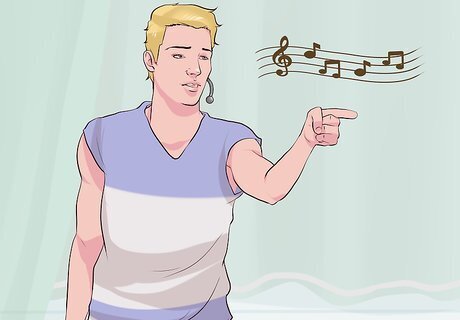
Take the pressure out of your opening line. If you’ll be speaking or singing on stage, a good trick to open naturally is to ask yourself a question in your mind that your opening line answers. Imagine that someone else has asked you the question, and your opening line is the response. For example, if you’re going to perform “America The Beautiful,” ask yourself in your head “Whose land is this?” Then start singing your answer, which is the opening line to the song: “This land is your land, this land is my land…”
Putting on a Show

Use positive body language and facial expressions. Feel happy and sincere when you smile. People can recognize a fake smile even from far off. Also, you don’t want photos of yourself performing with an insincere grin. Summon happy thoughts and match your expression to those emotions to smile naturally. Get into your performance so that your facial expressions will genuinely reflect the appropriate emotions. This can not only improve the way your audience views your performance, but it also improves the way people listen to a performance. Project your emotions by keeping your body language in tune with the movement of your performance. For example, if you’re expressing sincerity, you might hold your hand over your heart. If you’re being welcoming, you could gesture with your arms in the air as if you’re about to give someone a hug.
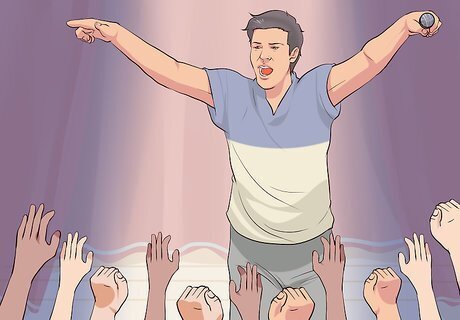
Be energetic. Whatever you’re doing on stage, do it actively. Think of the people in the last row of the venue and how much energy is required to reach them. Also keep in your mind the meaning behind your performance piece, so that your energy matches it without being too little or too much. For example, if you’re singing, imagine that you’re singing to the person in the very last row. Project your voice and use sweeping gestures. You want to be lively and have movement, but avoid fidgeting.
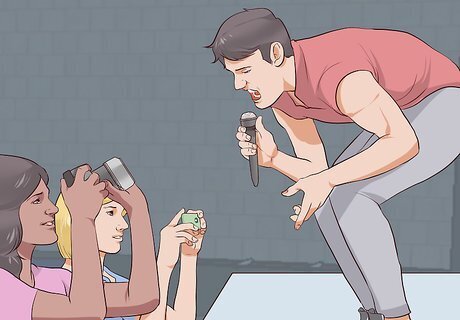
Interact with the crowd. Work on your stage presence. You don’t want to spend your performance staring at a microphone or instrument, looking at the floor, or closing your eyes. Connect with your audience by making eye contact with people in the crowd, if you can see them. If the stage lights are so bright that you can’t see the audience well, span your gaze in their direction. Don’t stay in one place if you don’t have to. Move around the stage, such as coming up to the front of the stage nearer to the audience. Face your audience with the mindset that you are pleased to see them. They showed up for the performance, so you want them to feel appreciated!

Notice where cameras are. Be aware of where photographers are located so that you can incorporate subtle poses into your performance. Look at the photographer and give the camera a glance, wink, smile or pose for several seconds at a time. This should appear seamless so that the rest of your audience doesn’t realize that you’re doing it. You don’t want it to be obvious to the crowd that you’re mugging for the cameras. Do this as naturally and subtly as possible.




















Comments
0 comment